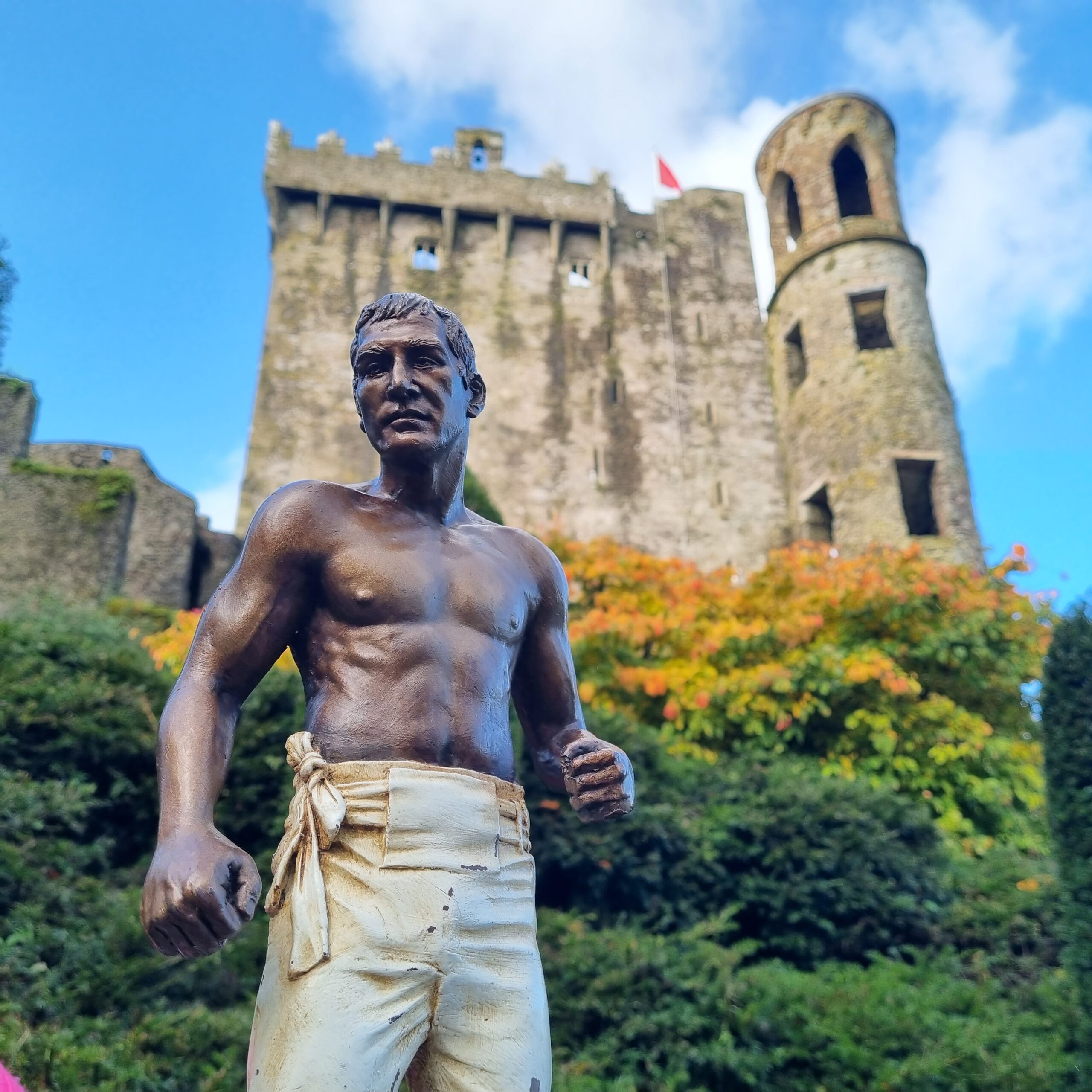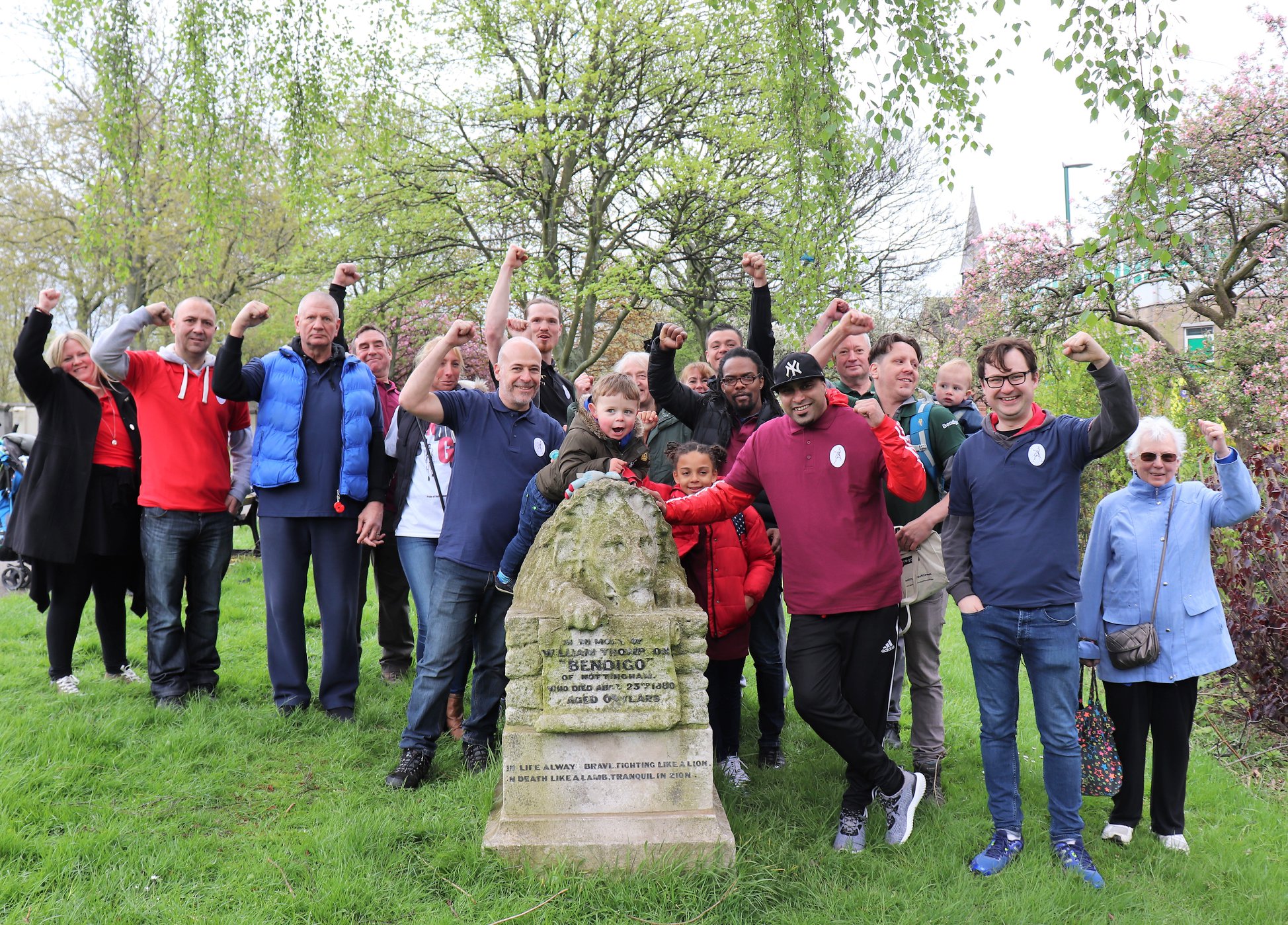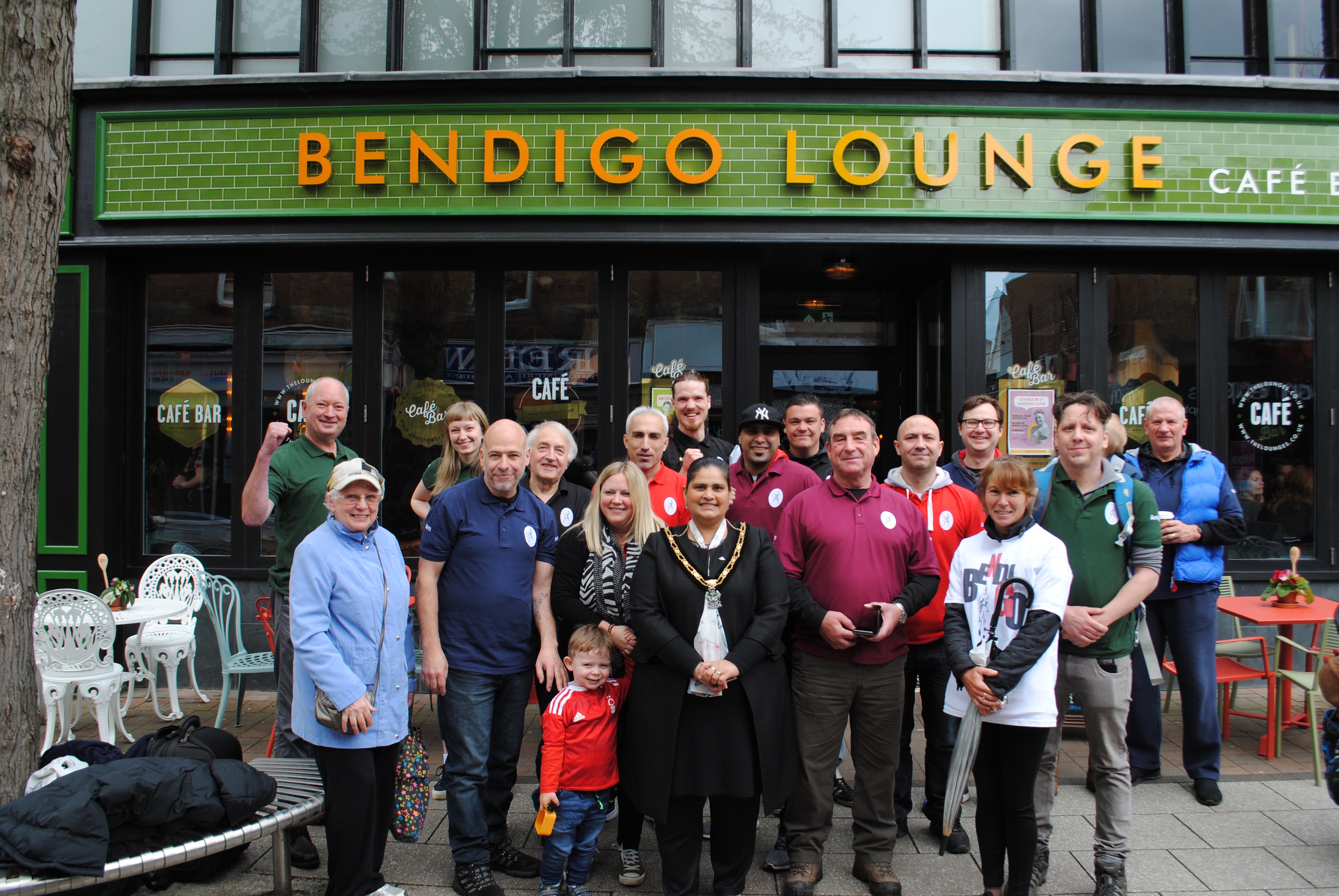Hello Supporter. We hope that you are well.
2023 has been a busy year for the Bendigo Heritage Project.
We have continued to operate our guided walking tour, taking groups of people around historic Nottingham and learning all about the Bendigo Story. In addition, we kept the momentum going with talks and conversations to interested parties. Here’s a summary of what we posted on our website.
In February we exhibited a collection of images about Bendigo as an exhibit gallery at Cafe Sobar in Nottingham. The cafe was a perfect partnership for us, as Café Sobar is an innovative alcohol-free cafe and social space. Something that wasn’t available to Bendigo when he battled with his problems with alcohol.
We were also pleased to have finally located the grave of Bendigo’s brother John Thompson who died in 1873 at the age of 64. He is buried in Nottingham’s Church (Rock) Cemetery but locating the plot proved difficult. Church Cemetery is a Grade II listed site at the south-east corner of Forest Recreation Ground in Nottingham. It was created around an old sand mine and some of the mine tunnels give the place a unique atmosphere. It was founded in 1848 but did not open until 1856.
After a pause in the operations at Nottingham Castle, we were pleased to renew our relationship with the management team. Our heritage booklets are now on sale in the shop, and we are in discussions with them about how the Bendigo Story links in with the history of Nottingham Castle.
One of our trustees came across an old newspaper article from Australia that finally answered a question for us. It identified who was responsible for naming Bendigo’s Creek, which (after the Australian gold-rush) went on to become the City of Bendigo in 1871. The person was Tom Myers who, it turns out, has a street named after him in the historic gold-rush town of Victoria, Australia.
Our exhibition of images then moved to the William Booth Memorial Centre. The title of the exhibition was Bendigo – From Pugilist To Preacher. William Booth of course, was the Nottingham man who established the Salvation Army during Bendigo’s lifetime.
One of our trustees went to County Cork in Ireland and took our maquette of Bendigo with him. This small statue (made by renowned sculptor Andy Edwards) always gets attention and we even took him to Brian Dillon’s Boxing Club in Cork and showed him off to the members after their training session.
Thanks again for your support this year. Who knows, next year we may be a step closer to our aim of commissioning a statue to Nottingham’s first sporting superstar and ‘original southpaw’.
Best wishes,
The Trustees


